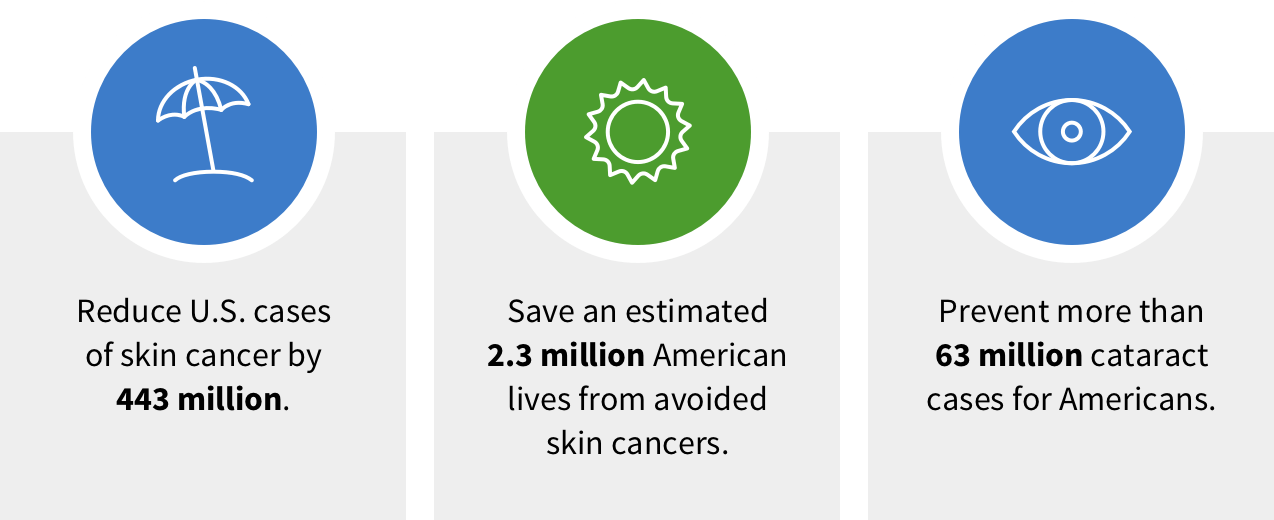Atmospheric and Health Effects Framework Model Estimating Ultraviolet Radiation-induced Health Effects
The Atmospheric and Health Effects Framework (AHEF) model is used by the EPA to evaluate human health effects associated with a depleted stratospheric ozone layer. It estimates the number of skin cancer and cataract cases and deaths from skin cancer in the United States that will be prevented by protecting the ozone layer, which results in a decrease of the ultraviolet (UV) radiation reaching Earth’s surface that causes these diseases. The AHEF combines satellite ozone measurements with projected emissions of ozone-depleting substances (ODS) and demographic data to estimate the probable difference in deaths and skin cancer/cataract incidences by comparing different ODS emissions scenarios. Example scenarios include: no Montreal Protocol on Substances that Deplete the Ozone Layer (Montreal Protocol); the original 1987 Montreal Protocol; and the Montreal Protocol as amended and adjusted.
The May 2020 report estimates that full implementation of the Montreal Protocol on Substances that Deplete the Ozone Layer is expected to prevent approximately 443 million cases of skin cancer, 2.3 million skin cancer deaths, and 63 million cases of cataracts for people in the United States born in the years 1890–2100.

The AHEF estimates the incidences of cutaneous malignant melanoma (melanoma) and keratinocyte skin cancer. Melanoma is a potentially life-threatening disease and is the most serious type of skin cancer. It occurs most frequently in persons over age 40 with light complexion and hair color. Keratinocyte cancer, or “non-melanoma skin cancer,” includes squamous cell carcinoma, basal cell carcinoma, and several other rare types. The AHEF also models incidences of cataract, which is a clouding of the eye’s naturally clear lens that can block vision and cause blindness. While cataract related to age can have a number of potential causes, lifelong exposure to UV radiation can play a big role.
The AHEF model is continually being updated to use the most recent data on ODS emissions, ozone depletion, UV exposure, demographics, and human health effects. From new scientific findings to updated population data, the AHEF model has been regularly revised since it was created to present the most up-to-date information. The 2020 version incorporates changes to various atmospheric and chemical parameters, updated population data, changes to methodologies, and modernization and streamlining of the underlying computer code.
Previous AHEF reports are also available below.
